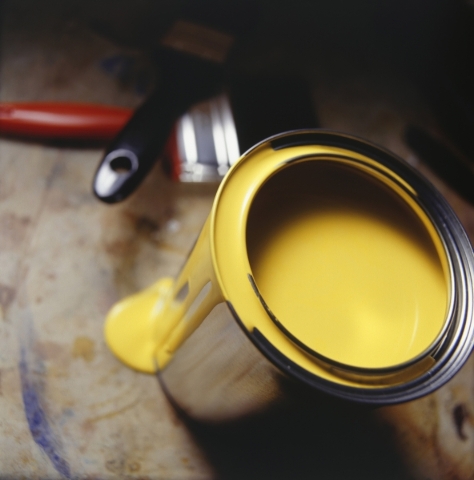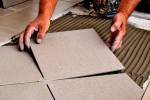Chalk walls face changing styles
It was great fun chalk painting and chalkboarding just about everything in sight (watch out, Rover — only kidding!) … for a while. But now there's a new movement toward a sleeker, more streamlined look in home decoration. If you still love your write-on-'em chalkboard walls or the shabby chic style of chalk paint, fine. Just keep on keeping on and enjoy them in good health. OTOH, if you feel that these house painting styles are starting to rub you the wrong way like ... well ... fingernails on a chalkboard, here's how to successfully make the switch to latex.
Chalkboard Paint vs. Chalk Paint
True, their names are similar and both these types of paint came into fashion at more or less the same time. However, you will find some important differences between the two. Chalkboard paint is manufactured to produce a smooth, durable, matt finish. Available in a whole rainbow of colors in addition to the traditional black, it's used to transform anything — walls, doors, plant pots, or even refrigerators — into chalkboards that can be written or drawn on with regular chalk, and then easily erased. Chalk paint was developed to give furniture a variety of interesting distressed effects, although aficionados have since experimented with it on all kinds of surfaces, such as kitchen cabinets. Its matt finish is often enhanced by the use of waxes.
The Importance of Pre-Painting Prep
The old saying "Well begun is half done" still holds true when it comes to just about every painting job. Begin your prep work by removing any chalk dust and thoroughly cleaning the surface, wielding a soft cloth moistened with warm, soapy water. Then repair any cracks or gouges by means of filler. Sand with a fine- to medium-grit sandpaper in order to help the new paint to adhere. Then wipe off the sanding residue and make sure the wall or another item to be painted is completely dry. At this point, you'll be ready to apply your primer.
Covering Chalkboard Paint
Once you've taken the time to prep carefully, painting over your old chalkboard paint will be relatively straightforward. The main issue is getting good coverage over black or another dark shade — as anyone who has "inherited" a home with deep purple or midnight blue walls can tell you. Priming is key. If you are planning to paint a pale hue, applying two coats of primer will be extremely helpful, as will using a primer that's been tinted with a color similar to your top coat. Just be sure to allow plenty of time and good ventilation, if possible, for drying between coats. Choose high-quality latex paint, brushes and rollers for the best coverage. Mix your paint very well and apply it undiluted. Should you feel the need, you can purchase one of the specially formulated extreme hide paints on the market.
Covering Chalk Paint
Covering chalk paint with latex can be as simple as pie … or an incredible headache. It all depends on what the painted texture is like and whether the piece has been waxed. A rough texture will need painstaking sanding work to prepare it for repainting; an electric sander might be your best bet here. Wax requires even more labor-intensive removal. Rub the coated, painted wood with mineral spirits to dissolve the wax. Then gently scrub with oil-free steel wool or a non-woven pad, followed by sandpaper to remove all traces. You will now be ready to clean, prime and repaint.




























